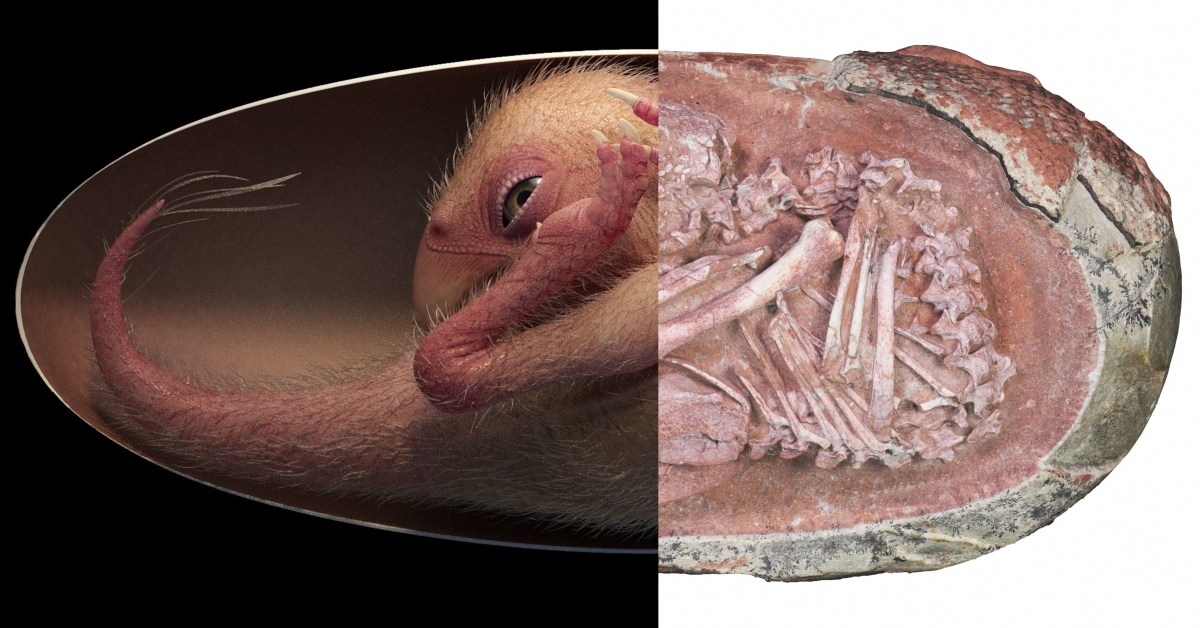It’s one of the most complete dino embryos ever found – tucked into a position that’s strikingly similar to today’s unhatched chickens.

The egg was discovered in Ganzhou, southern China by the stone mining company Yingliang Group back in 2000. However, its significance remained unnoticed for another 15 years, when a crack in the egg’s surface revealed a few fragile bones suggesting there’s a prize waiting inside.
The exceptionally preserved dinosaur embryo is at least 66 million years old and belonged to a toothless theropod dinosaur, or oviraptorosaur, dubbed “Baby Yingliang” by researchers.
“I couldn’t believe my eyes because it is so perfectly preserved,” says study author Darla Zelenitsky, a paleontologist at the University of Calgary who specializes in dinosaur eggs.

Researchers found Baby Yingliang in a curled-up position that was previously unseen in dinosaurs, but is rather similar to how modern birds hatch. Called “tucking”, the behavior in birds is controlled by the central nervous system and involves chicks just about to hatch tucking their head under their right wing in order to stabilize the head while cracking the shell with their beak. Embryos that fail to tuck have a higher chance of dying after an unsuccessful hatching.
“This indicates that such behavior in modern birds first evolved and originated among their dinosaur ancestors,” study co-author Fion Waisum Ma explained.

Oviraptorosaurs were feathered dinosaurs that lived in what is now Asia and North America during the Late Cretaceous period. The latin name means “egg thief lizards,” but their diets and beak shapes actually varied greatly. They also showed a lot of variation in terms of size, ranging from modern turkeys to massive Gigantoraptors, that measured about eight meters (26 feet) long.
The new find measures about 27cm (10.6 inches) long from head to tail and lies inside a 17cm- (6.6 inch)-long egg currently residing at the Yingliang Stone Nature History Museum.
Researchers believe the creature was probably preserved by a sudden mudslide that buried the egg, protecting it from scavengers.

Baby Yingliang would have grown to three meters (about 6.5 feet) long, had it survived to adulthood. The specimen was one of several egg fossils that were forgotten in storage for decades, until the research team decided to scrape off part of its eggshell to finally uncover the embryo hidden within.
“This dinosaur embryo inside its egg is one of the most beautiful fossils I have ever seen,” said Professor Steve Brusatte of the University of Edinburgh, part of the research team, in a statement. “This little prenatal dinosaur looks just like a baby bird curled in its egg, which is yet more evidence that many features characteristic of today’s birds first evolved in their dinosaur ancestors.”
As part of the body is still covered by rock, the research team plans to use advanced scanning techniques to obtain a full image of the skeleton, including the skull bones.
Sources: 1, 2, 3, 4, 5
